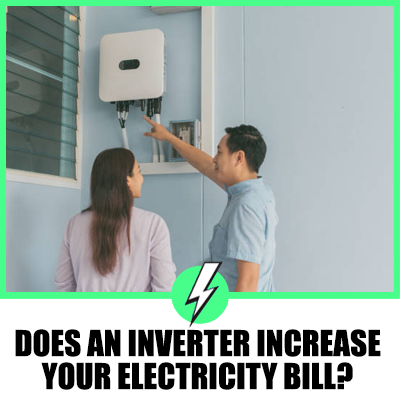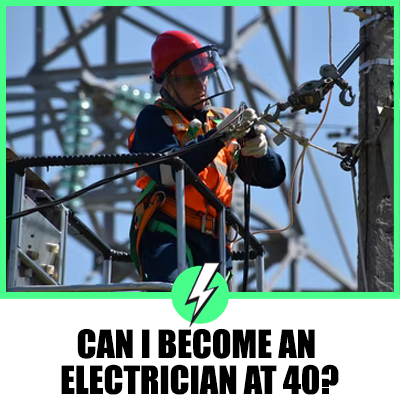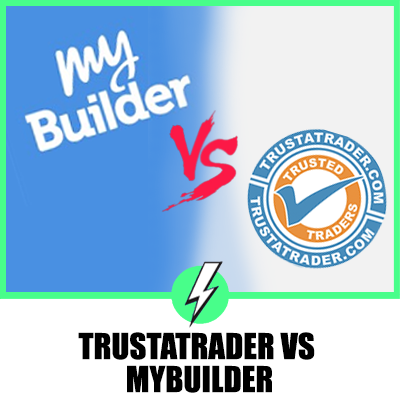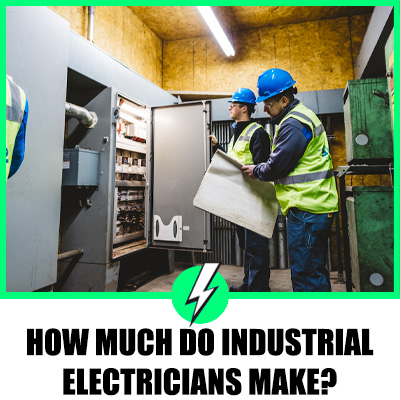Substation Electrician Vs Lineman
What does it take to become a substation electrician or a lineman? Are these jobs more dangerous than being a regular electrician?
To become a substation electrician or a linesman, you will need at least 5 GCSEs with a minimum grade of a C. You must have maths and English. The substation electrician and the linesman will be working with high voltage electricity, and there is no margin for error.
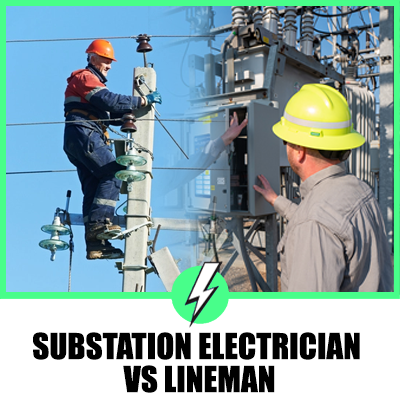
Contents
What do substations do?
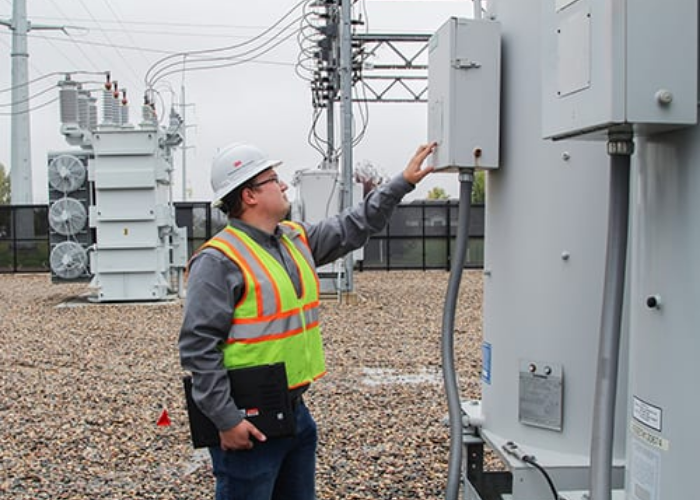
Substations convert transmitted electricity from the power generator into valuable domestic electricity to power your home.
Voltages from the power generator need to be stepped down using transformers before the electricity can be distributed in its area of operation.
What does an electrician do at a substation?
Many of you are familiar with the sight of substations as they are located in communities where the electricity can be safely distributed to domestic dwellings and shops.
You may rarely see an electrician in a small substation In your local community, but when you do, they are there to troubleshoot a wiring problem or do preventative maintenance.
Typically the substation electrician will be changing breakers for preventive maintenance and running voltage tests, ensuring the distribution levels are correct.
Who owns a substation?
Generally, the power distributor owns the substation and is responsible for its maintenance and upkeep.
The electricians who work in the substations are employed directly by the power distributor. Substation electricians work on a rota system to provide 25/7 cover to ensure power supplies are not disrupted.
What does a high voltage electrician do?
High voltage electricians can work in various industries, but to work in a substation, you will have been trained to deal with high voltage electricity.
High voltage sparks can be called on to repair faulty wiring within a control system in the substation.
They can also test and diagnose faults and make repairs. The high voltage spark may require installing updated equipment and working as part of a larger team.
Is it dangerous working in a substation?
Yes, this is why substations are very secure with high fences and security cameras. The high voltage can kill an intruder or an untrained individual very easily.
A large part of the training of a substation electrician is safety training, and safety is taken seriously. Unfortunately, many safety procedures used today have been introduced after fatal accidents occurred in the substation.
How much voltage is in a substation?
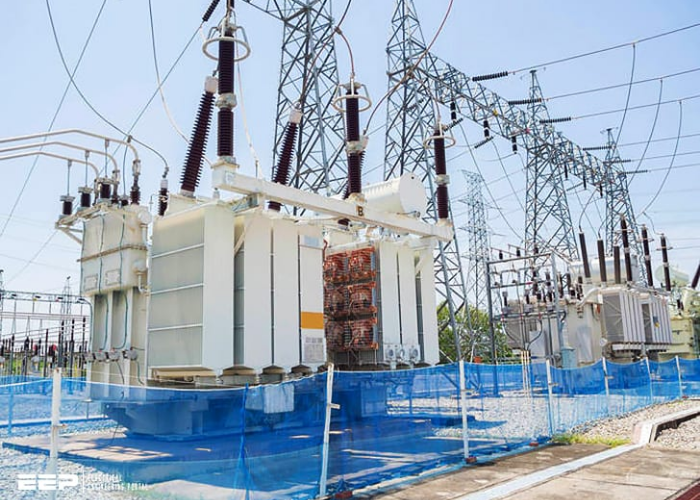
The electric current entering the substation is generally 25,000 volts. This is what is generated by the supplier.
Large substations take the 25,000 volts and step it up to either 132,000 volts or 400,000 volts before it is ready to be distributed across long distances.
The substations that do this are generally in remote areas and are known as “grid substations”.
Why don’t you see electricians working in substations?
There is a move to monitor substations remotely by checking the input and output current via control systems.
However, this does not mean an electrician does not attend to make the repairs and implement the preventive maintenance schedule.
What qualifications do you need to become a substation electrician?
You will need to follow a standard electrical apprenticeship and gain an NVQ Level 3 diploma before specialising in high voltage electricity.
You may be employed by a contractor whose primary function is high voltage work, but you will need to understand electrical work at a basic level.
What does a substation electrician make?
The average salary of a substation electrician averages just short of 50k per year. It’s a solid salary.
Other benefits include paid holiday leave, statutory bank holidays, and a pension scheme.
Is living next to a substation safe?
There is some controversy regarding EMF emissions and stray electricity travelling through steel pipes.
There is evidence of higher incidences of unexplained illness and even cancer in those people lining close to substations.
What does a lineman do?
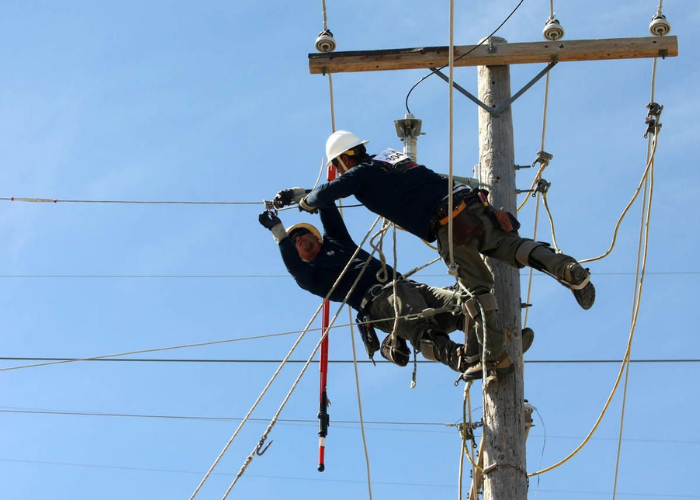
A lineman repairs faulty find overhead power lines in their designated country area. They often use hydraulic buckets to access the overhead power lines.
They still use spikes to climb wood power poles where access is limited.
An overhead linesman can find themselves trekking across open countryside in all weather to locate an electricity pole that vehicles can’t get to.
What qualifications do you need to become a linesman?
You will need the obligatory 5 GCSEs, including maths and English. The grades can not be less than a C.
You will enter into a 4-year apprenticeship while being employed by a company in your specialised area of expertise.
After 4 years you will have gained a NVQ Level 3 Diploma and are qualified to be a linesman.
Do you work on call as a linesman?
Yes, many power lines run across farmland and can be found surrounded by trees. One of the main reasons for power interruptions is wind and falling trees or branches onto power lines.
It is the responsibility of the linesman to keep the power flowing around the clock, and they can be called out at any time in any weather to reconnect the power.
Is it dangerous being a lineman?
There are more risks to being a lineman than a standard electrician or a substation electrician. The lines carrying the electricity are high voltage, so there is the inherent danger of fatal electrocution.
Linemen work at height, sometimes climbing in spikes in the driving wind and rain or icy conditions, which adds another dangerous element to the job.
What does a lineman make?
36K per year. Normal large company benefits will apply, such as paid holiday leave, statutory holidays and a pension scheme.
The pay is less than most of the other electrical trades but can be the most rewarding in terms of job satisfaction.
Which job is better?
It depends on your personality, what your outlook and the type of work you prefer. Both are good jobs, but both have inherent dangers associated with the type of work.
